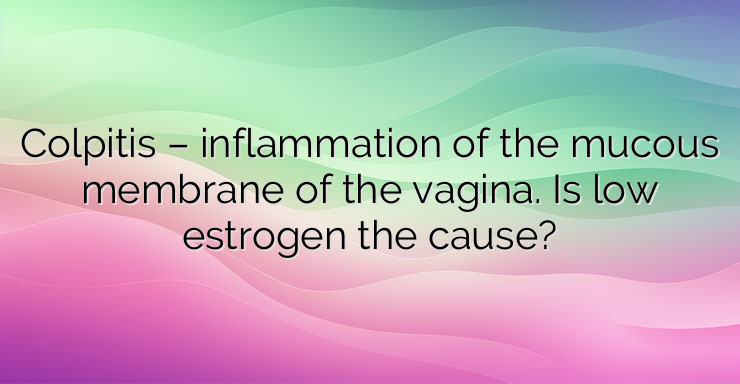Colpitis is an inflammation of the lining of the vagina. Vaginitis is the most common reason for consulting a gynecologist in women. Vaginitis, as an inflammatory process, can have a different etiology, and in about 30% of cases it is due to a bacterial infection. Vaginitis is a medical term that describes various diseases that cause infection or inflammation of the vagina. Vulvovaginitis refers to inflammation of both the vagina and the vulva (external female genitalia). These conditions can result from an infection caused by organisms such as bacteria, fungi, or viruses. Irritations from chemicals in intimate creams, sprays, or even clothing that comes into contact with the area can also lead to inflammation. In some cases, vaginitis is the result of microorganisms that are transmitted between sexual partners, vaginal dryness or even in the absence of estrogen. Depending on the causative agent, infections of the vaginal mucosa can have different symptoms or be asymptomatic. In some cases, there may even be more than one type of vaginitis at the same time. Candida or “fungal” infections are characterized by a thick, white vaginal discharge with the consistency of cottage cheese, the discharge does not have a specific aroma. Many patients report itching or redness of the external genitalia, as well as dysuric disturbances. Very often, bacterial vaginosis is asymptomatic, and in most cases the diagnosis is made during a routine examination. Some patients report an unpleasant smell of vaginal discharge that worsens after sex or during menstruation. A discharge that is thin and milky and can be described as having a “fishy” smell. This smell can become more noticeable especially after intercourse. As for the inflammation caused by trichomoniasis, the symptoms are more violent and include a frothy, greenish-yellow discharge that often has an unpleasant odor, itching and soreness of the vagina and vulva, as well as burning during urination. Discomfort in the lower abdomen and vaginal pain during intercourse. These symptoms may worsen after menstruation. There are many causes of vaginitis, depending on the type of causative agent. Changes in the vaginal flora. Two of the most common types of vaginitis – fungal infections and bacterial vaginosis – occur when there are changes in the natural internal environment of the vagina or vaginal flora. Yeast infections occur when there is an overgrowth of fungi in the genus Candida. Bacterial vaginosis occurs with an overgrowth of Gardnerella vaginalis bacteria. Both Candida and Gardnerella vaginalis occur naturally in the vaginal flora and keep it healthy, but their overgrowth can lead to a vaginal infection. Sexually transmitted infections. Parasites, bacteria and viruses that cause infection can be passed from person to person through sexual contact. Intimate products with chemical irritants. Some of the chemicals in products commonly used for vaginal hygiene,do more harm than good. Lotions, detergents, sprays and other products may contain chemicals that lead to the development of vaginitis. Change in hormonal levels. A decrease in the amount of estrogen that the body produces can cause changes in the vaginal microflora, leading to the development of vaginitis. References: 1. Neal CM, Kus LH, Eckert LO, Peipert JF. Noncandidal vaginitis: a comprehensive approach to diagnosis and management. (https://pubmed.ncbi.nlm.nih.gov/31513780/) Am J Obstet Gynecol. 2020. 2. Reiter S, Kellogg Spadt S. Bacterial vaginosis: a primer for clinicians. Postgrad Med. 2019 3. Russo R, Superti F, Karadja E, De Seta F. Randomized clinical trial in women with Recurrent Vulvovaginal Candidiasis: Efficacy of probiotics and lactoferrin as maintenance treatment.


Leave a Reply